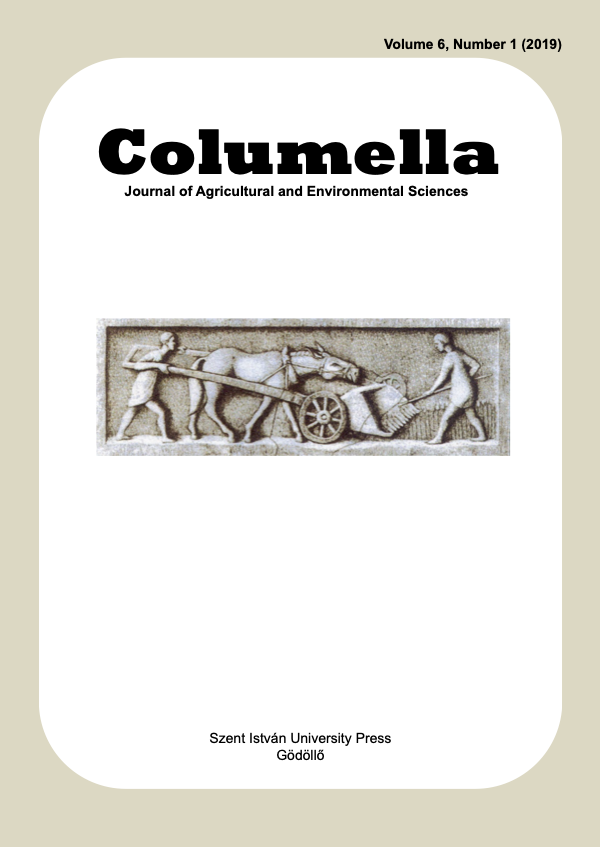The effects of N fertilization on soybean (Glycine max L. Merrill) yield and quality under different drought stress levels
DOI:
https://doi.org/10.18380/SZIE.COLUM.2019.6.19Keywords:
Soybean, drought stress, (N) fertilization, seed qualityAbstract
As a result to continuous exploitation in agriculture, soil nutrients decrease, and one way of re-fertilizing is by mineral fertilization. However, applying mineral fertilizers should be controlled and pre-evaluated in terms of quantity to be added, as the excessive amounts could negatively affect both plants and soil. Fertilization is very important under abiotic stress conditions, like drought stress which has negative effects on both quantity (yield) and quality (seed content) of crops, especially drought-sensitive crops such as soybean; it is a very important legume with high content of both protein and oil.
In order to study the influence of both nitrogen fertilization and drought stress on the yield and the seed quality of two soybean cultivars, an experiment was conducted in Debrecen, Hungary in 2017. Three N fertilization rates; 0, 35 and 105 kg ha-1 were applied under three irrigation regimes; severe drought (SD), moderate drought (MD) and no drought (ND). The results showed drought stress to negatively affect the yield of both cultivars by different extents; it also manipulated both protein and oil concentrations. (N) fertilization could enhance the yield of (MD) and (ND), but not (SD) treatment when applied in a relatively-low rate, whereas it negatively affected the yield when high rate was applied to (ND) treatment. The protein concentration increased as the (N) fertilization rate increased, whereas the oil concentration was not affected by (N) fertilization, but rather by drought.
It was concluded that the high-rate application of nitrogen is not always recommended for soybean, especially when water is available for plants. (N) fertilization has a noticeable effect on the protein but not on the oil concentration. Further studies on the best N rate when drought stress is applied at certain growth-stage will help to better understand the combined effects of both traits on soybean yield and quality.
Downloads
Published
Issue
Section
License
Copyright (c) 2019 Oqba Basal, András Szabó

This work is licensed under a Creative Commons Attribution-NonCommercial-NoDerivatives 4.0 International License.






